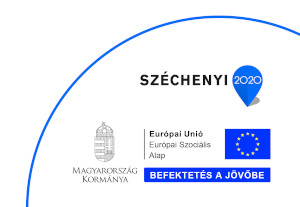General characteristics
The chapel of the episcopal (now archiepiscopal) palace built during the episcopate of Ignác Koller (1762–1773) according to the plans of Jakab Fellner is located on its upper story in the western end of the northern wing. The nearly square room with a cavetto vault is lit by two windows on the western wall. The eastern wall of the chapel is filled by an altar structure decorated with gilded ornaments and covered with grey artificial marble. Its structure is articulated by pairs of fluted pillar...Read more
The chapel of the episcopal (now archiepiscopal) palace built during the episcopate of Ignác Koller (1762–1773) according to the plans of Jakab Fellner is located on its upper story in the western end of the northern wing. The nearly square room with a cavetto vault is lit by two windows on the western wall. The eastern wall of the chapel is filled by an altar structure decorated with gilded ornaments and covered with grey artificial marble. Its structure is articulated by pairs of fluted pillars, columns, and pilasters, and is crowned by a broken pediment with a basket-handle arch. The altarpiece was painted by Ferenc Szoldatits in 1896 and depicts Mary as the patron saint of the Hungarians accompanied by St. Emeric and St. Margaret. Each of the side walls has two niches with basket-handle arches that are separated by a pilaster and there is a stucco cornice stretching around below the vaults. While the western niche of the southern wall contains the entrance, the opposite niche has the original altarpiece of the chapel depicting Christ bound, a painting attributed to Adam Friedrich Oeser that was later placed in a carved Neo-Rococo frame. The ceiling of the chapel is decorated with a composition representing the allegory of Salvation, contained within an illusionistic painted balustrade frame made by Ignaz Cimbal in 1772. The painted architectural ornaments of the side walls are the results of renovations related to the Hungarian millennium celebrations and can be attributed to Rudolf Steiner, a painter from Sopron.
Read less
Külső leírás
A veszprémi Várhegy keleti peremén álló, U-alaprajzú, emeletes, kontyolt nyeregtetős, a hátsó rizalitok felett manzárdtetetős későbarokk palotaépület első emeletén, az északi szárny utolsó helyisége a kápolna.
Belső leírás
Kis alapterületű, megközelítőleg négyzet alaprajzú tér, melyet a palota előtt kiszélesedő utcára néző két nagy ablak világít meg. Falait középen magas posztamensen álló, aranyozott volutás fejezetű, stukkómárvány borítású falpillérek tagolják, melyek erősen kiugró párkányt hordoznak. A keleti falon két pilaszter széles fülkét határol, melynek lapos kosáríves oromzatát a pilaszterekhez hasonló oszlopok tartják. Az oszlopok között, a sekély fülke hátfalán ismét lapos falpillérpárok következnek, vá...Read more
Kis alapterületű, megközelítőleg négyzet alaprajzú tér, melyet a palota előtt kiszélesedő utcára néző két nagy ablak világít meg. Falait középen magas posztamensen álló, aranyozott volutás fejezetű, stukkómárvány borítású falpillérek tagolják, melyek erősen kiugró párkányt hordoznak. A keleti falon két pilaszter széles fülkét határol, melynek lapos kosáríves oromzatát a pilaszterekhez hasonló oszlopok tartják. Az oszlopok között, a sekély fülke hátfalán ismét lapos falpillérpárok következnek, váltakozó sorozatuk ünnepélyes keretet képez az oltárképnek. Az oltárfülkét lezáró, oromzatként enyhén kiemelkedő párkányt a tükörboltozatra festett architektúra folytatja. Ezen túl a mennyezet mintha eltűnne, és a kápolna megnyílni látszik az ég felé. Az összetett szimbolikájú ábrázolás témája a Megváltás allegóriája. A teremben barokk stallum és az egykori főoltárkép. Read less
Általános állapot
felújítás alatt; nem veszélyezetett
Források
településre első adat: rövidített levéltári vagy bibliográfiai adat
templom v papja első adat (alapítás, építés, felszentelés): rövidített levéltári vagy bibliográfiai adat
település birtokosa: rövidített levéltári vagy bibliográfiai adat
templom kegyura: rövidített levéltári vagy bibliográfiai adat
középkori templom építési kora és átalakítása: rövidített levéltári vagy bibliográfiai adat
protestáns használat: rövidített levéltári vagy bibliográfiai adat
16-17. századi történet: rövidített levéltári vagy bibliográfiai adat
plébánia újraalapítása: rövidített levéltári vagy bibliográfiai adat
török utáni templom építése: rövidített levéltári vagy bibliográfiai adat
török utáni tp. építtetője: rövidített levéltári vagy bibliográfiai adat
történeti leírás 1701-1945: rövidített levéltári vagy bibliográfiai adat
történeti leírás 1945-: rövidített levéltári vagy bibliográfiai adat
mérete: rövidített levéltári vagy bibliográfiai adat
építészek, és kivitelezők: rövidített levéltári vagy bibliográfiai adat
más mesterek neve: rövidített levéltári vagy bibliográfiai adat
egyházigazgatási beosztás: rövidített levéltári vagy bibliográfiai adat
ellátó plébánia: rövidített levéltári vagy bibliográfiai adat
templom v papja első adat (alapítás, építés, felszentelés): rövidített levéltári vagy bibliográfiai adat
település birtokosa: rövidített levéltári vagy bibliográfiai adat
templom kegyura: rövidített levéltári vagy bibliográfiai adat
középkori templom építési kora és átalakítása: rövidített levéltári vagy bibliográfiai adat
protestáns használat: rövidített levéltári vagy bibliográfiai adat
16-17. századi történet: rövidített levéltári vagy bibliográfiai adat
plébánia újraalapítása: rövidített levéltári vagy bibliográfiai adat
török utáni templom építése: rövidített levéltári vagy bibliográfiai adat
török utáni tp. építtetője: rövidített levéltári vagy bibliográfiai adat
történeti leírás 1701-1945: rövidített levéltári vagy bibliográfiai adat
történeti leírás 1945-: rövidített levéltári vagy bibliográfiai adat
mérete: rövidített levéltári vagy bibliográfiai adat
építészek, és kivitelezők: rövidített levéltári vagy bibliográfiai adat
más mesterek neve: rövidített levéltári vagy bibliográfiai adat
egyházigazgatási beosztás: rövidített levéltári vagy bibliográfiai adat
ellátó plébánia: rövidített levéltári vagy bibliográfiai adat
Irodalomjegyzék
Lukcsics Pál–Pfeiffer János: A veszprémi püspöki vár a katolikus restauráció korában. A veszprémi egyházmegye múltjából 1. Veszprém, 1933., Igaz Rita: A veszprémi püspöki palota és interieurjei az építéskorabeli leltárak tükrében. In: Bardoly István–Haris Andrea (szerk.): Détshy Mihály nyolcvanadik születésnapjára tanulmányok. Művészettörténet – műemlékvédelem 11. Budapest, 2002. 441–460., Somorjay Sélysette: Veszprém, Püspöki palota. In: Szerk.: Jernyei Kiss János (szerk.): Barokk freskófestészet Magyarországon I. Fejér, Komárom-Esztergom és Veszprém megye. Budapest, 2019. 426–437., Somorjay Sélysette: A veszprémi érseki palota kápolnája. In: Veszprémi Szemle 2021/1. 26–45., Gaylhoffer Kovács Gábor: A püspöki (ma érseki) palota kápolnája/ Gábor Gaylhoffer Kovács: The chapel of the Bishop's (now Archbishop's) Palace. In: Jankovics Norbert (szerk.): Veszprém város templomai = Churches of Veszprém. Veszprémi Főegyházmegyei Könyvtár és Levéltár. Veszprém, 2023.
Írott források
MEMMDK_I.utem_fototar_Püspöki palota kápolnája_tsz. 4716, VFL_VIII.31_Pfeiffer_cedulak
